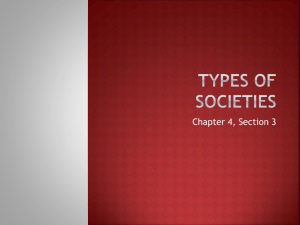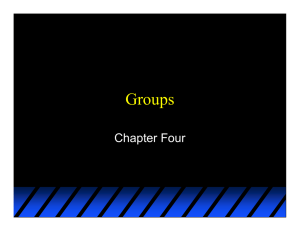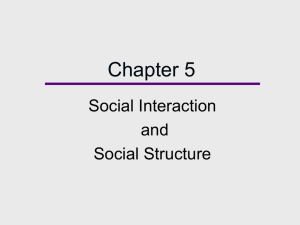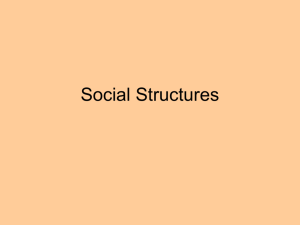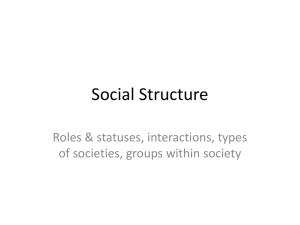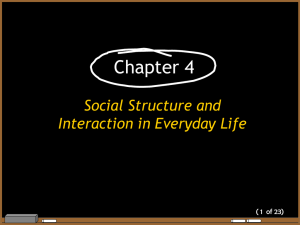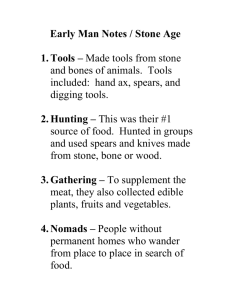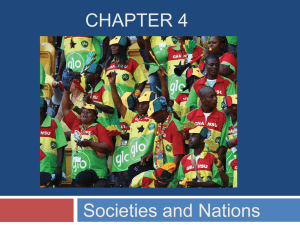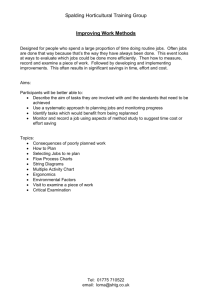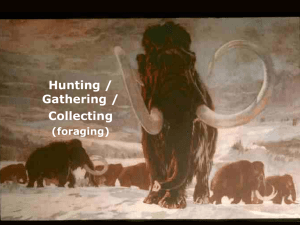Chapter 5 and 6
advertisement
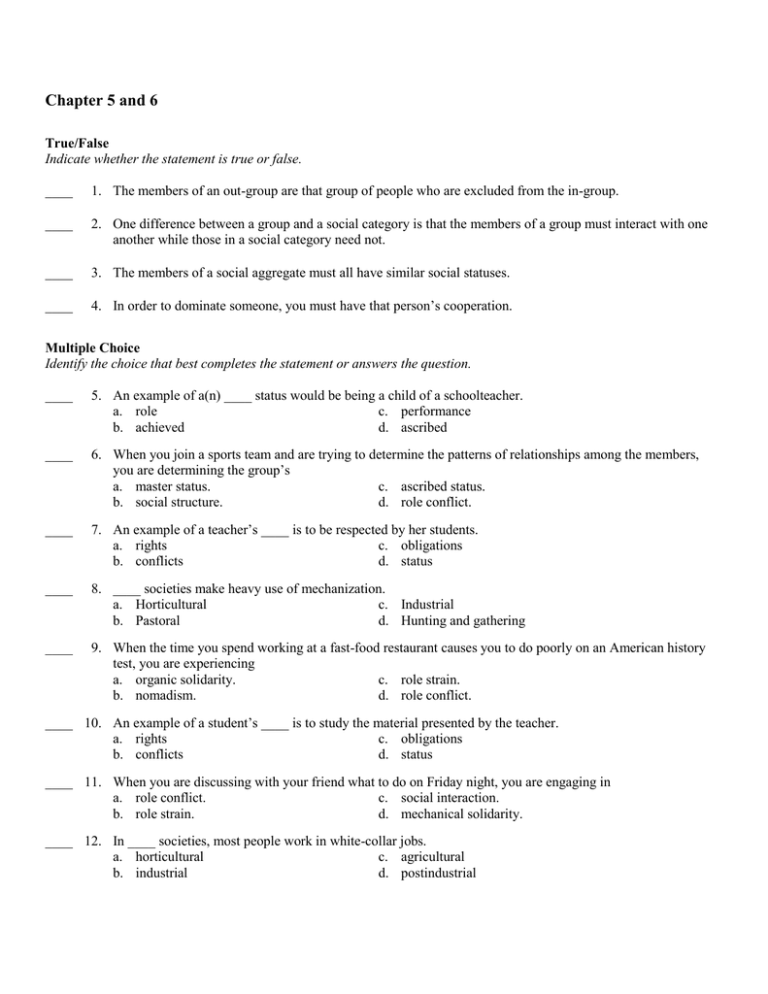
Chapter 5 and 6 True/False Indicate whether the statement is true or false. ____ 1. The members of an out-group are that group of people who are excluded from the in-group. ____ 2. One difference between a group and a social category is that the members of a group must interact with one another while those in a social category need not. ____ 3. The members of a social aggregate must all have similar social statuses. ____ 4. In order to dominate someone, you must have that person’s cooperation. Multiple Choice Identify the choice that best completes the statement or answers the question. ____ 5. An example of a(n) ____ status would be being a child of a schoolteacher. a. role c. performance b. achieved d. ascribed ____ 6. When you join a sports team and are trying to determine the patterns of relationships among the members, you are determining the group’s a. master status. c. ascribed status. b. social structure. d. role conflict. ____ 7. An example of a teacher’s ____ is to be respected by her students. a. rights c. obligations b. conflicts d. status ____ 8. ____ societies make heavy use of mechanization. a. Horticultural c. Industrial b. Pastoral d. Hunting and gathering ____ 9. When the time you spend working at a fast-food restaurant causes you to do poorly on an American history test, you are experiencing a. organic solidarity. c. role strain. b. nomadism. d. role conflict. ____ 10. An example of a student’s ____ is to study the material presented by the teacher. a. rights c. obligations b. conflicts d. status ____ 11. When you are discussing with your friend what to do on Friday night, you are engaging in a. role conflict. c. social interaction. b. role strain. d. mechanical solidarity. ____ 12. In ____ societies, most people work in white-collar jobs. a. horticultural c. agricultural b. industrial d. postindustrial ____ 13. Which of the following is NOT a characteristic of members of a group? a. They have at least one interest or goal in common. b. They take each other’s behavior into account. c. They are in contact with one another. d. They all have the same social status. ____ 14. Authority refers to using power a. to promote conflict. b. in a socially approved way. c. to discriminate against specific social categories of people. d. in an illegal way. ____ 15. Primary relationships are more likely to develop if the size of the group is small. What is the main reason for this fact? a. It is easier to know individuals well when you are in a small group rather than a large one. b. Large groups tend to be more coercive. c. Large groups tend to be more informal and therefore there is a less structured environment in which to get to know people. d. Large groups tend to meet more often than small groups. ____ 16. A motel manager requires that all maids wear the same uniform or they will be fired. This is an example of a. cooperation. c. conformity. b. conflict. d. coercion. ____ 17. Thirty retired people who go on a two-week tour of Europe together are an example of a a. primary group. c. bureaucracy. b. secondary group. d. social category. Matching Match each item with the correct statement below. a. pastoral society b. agricultural society c. postindustrial society d. industrial society e. horticultural society f. hunting and gathering society ____ 18. subsists primarily by growing food with the help of plows and animals ____ 19. most people have service-related jobs ____ 20. subsists primarily by raising animals ____ 21. subsists by manual farming, without the aid of equipment or animals ____ 22. survives by hunting animals and gathering naturally-growing fruits and vegetables ____ 23. basic goods and services are produced with the aid of science and technology Match each item with the correct statement below. a. social aggregate b. social category c. d. e. f. primary relationship group secondary relationship reference group ____ 24. an important intimate relationship, such as that between a wife and husband ____ 25. all of the people visiting a museum at the same time ____ 26. the members of a college basketball team that a high-school student emulates ____ 27. any collection of at least two people who share common ways of thinking and have at least one common goal ____ 28. all the people who work for a city government ____ 29. a relatively impersonal interaction that makes up only a small part of an individual’s social interactions

